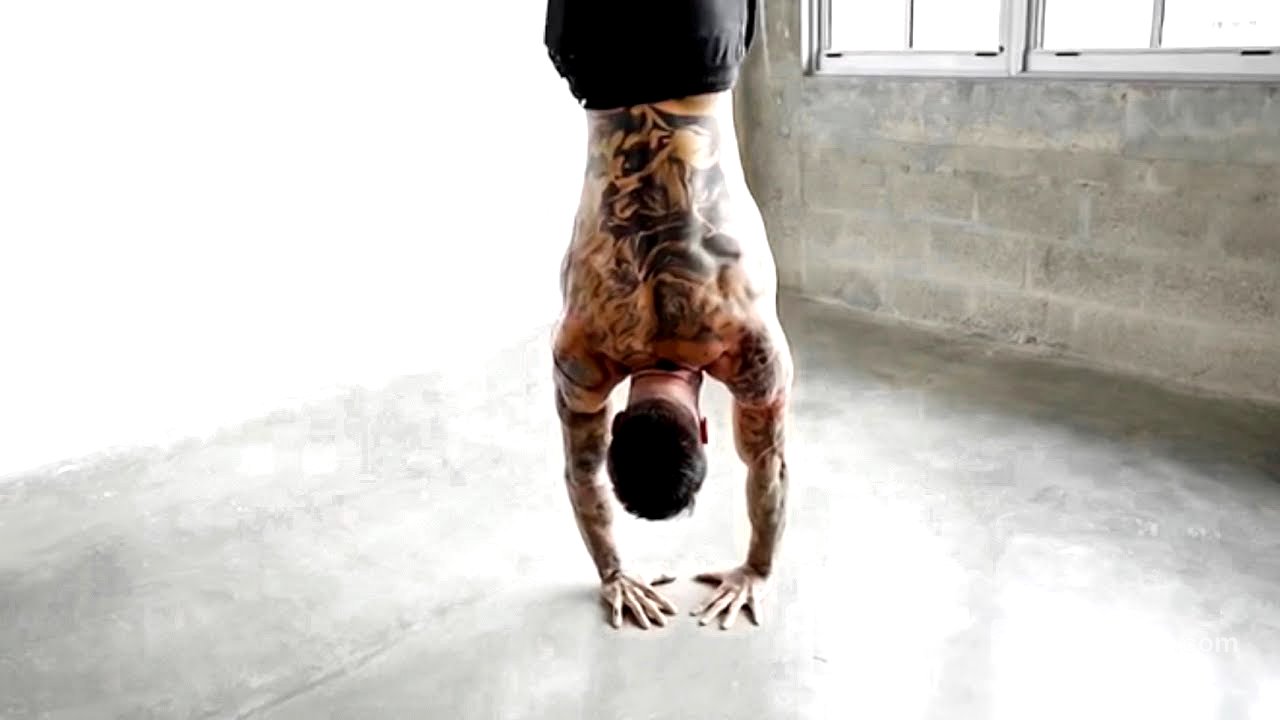TLDR;
This video provides a comprehensive guide on how to improve and prolong handstand holds. It emphasises the importance of body alignment, specifically achieving a stacked position to reduce strain and improve balance. The video includes a workout routine with exercises like handstand holds facing the wall, alternating toe taps, open and closed handstands, shoulder taps, and staggered handstand holds, all designed to enhance alignment, balance, and strength.
- Proper body alignment is crucial for longer handstand holds.
- The workout routine includes wall-assisted exercises to build strength and balance.
- Progress gradually from wall-assisted to freestanding exercises.
Introduction [0:04]
Chris Heria introduces a tutorial on how to hold a handstand for a longer duration. The techniques demonstrated are suitable for all levels and can be performed with or without wall assistance. He references his previous video on achieving a handstand in five steps as preparation for the content in this video.
Importance of Body Alignment [0:40]
The most common problem people face is maintaining a handstand position for an extended period. Tensing up leads to quicker fatigue and failure. Incorrect body alignment, such as bending, puts excessive pressure on the back and wrists, requiring more effort and strength. A straight, stacked position reduces resistance, making it easier to maintain balance. A bent handstand feels heavy, while a stacked position feels light and weightless, allowing for micro-movements to maintain equilibrium.
Achieving a Stacked Position [1:44]
To achieve a stacked position, visualise the body as a stack of books, aligning hands, shoulders, hips, and toes. Keeping these aligned and tight is essential; misalignment increases resistance and makes balancing harder. Record your handstands to visually assess your alignment. A strong base, with hands flat and shoulders aligned with fingertips, provides a solid foundation, preventing immediate balance issues upon going up.
Handstand Hold Facing the Wall [2:46]
The first exercise involves holding a handstand facing the wall. The wall provides a straight line reference, helping to build muscle memory for correct alignment. Pressing fingertips down prevents falling forward and pushes the body against the wall. Releasing fingertip pressure causes the body to move forward, transitioning to a freestanding handstand.
Handstand with Alternating Toe Taps [3:31]
This exercise involves performing a handstand facing the wall and alternating toe taps. This drill enhances comfort with lower body movement while maintaining a freestanding handstand. Each foot switch briefly requires holding a freestanding handstand. Over time, this builds strength and balance, extending the duration of freestanding moments. Maintain a straight body line, using only one leg for wall assistance.
Handstand Open and Closed [4:18]
This exercise helps in moving the lower body while maintaining the handstand. The different hand positions significantly strengthen the shoulders. Transitioning between hand widths puts all body weight on one arm, building strength and preparing for one-arm handstand training.
Handstand Shoulder Taps [5:07]
This exercise is described as a game-changer for handstand progression and an introduction to one-arm handstand training. Before tapping the shoulder, shift all body weight to one side to avoid falling. The supporting arm should be straight and locked, constantly pushing against the ground. Start by shifting weight to one side and tapping quickly, gradually increasing control and slowing the movement.
Staggered Handstand Holds [6:25]
The final exercise involves staggered handstand holds, which can be performed facing the wall initially and eventually freestanding. Parallettes or stacked books can be used to elevate and stagger the handstand. Start by holding a staggered handstand against the wall before attempting it with an elevated surface. Mastering these exercises off the wall in a freestanding position is the ultimate goal.
Conclusion [8:15]
The video concludes by recommending the workout routine be repeated at least three times. The THENX app is mentioned for accessing the workout on mobile devices. Viewers are encouraged to subscribe for more content, engage in the comments, and follow Chris Heria on other social media platforms for additional content and giveaways. Black Friday sales on THENX gear are also promoted.









